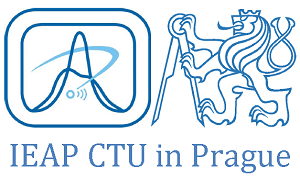
Optimization of the Photon Detection System (PDS) of the experiment DUNE
Lukáš Fajt
IEAP, CTU in Prague
Abstrakt:
The Deep Underground Neutrino Experiment (DUNE) is an international flagship experiment for neutrino science and proton decay studies. DUNE will consist of two neutrino detectors placed in the world’s most intense neutrino beam. One detector will record particle interactions near the source of the beam, at the Fermi National Accelerator Laboratory in Batavia, Illinois. A second, much larger, detector will be installed more than a kilometer underground at the Sanford Underground Research Laboratory in Lead, South Dakota — 1,300 kilometers downstream of the source. The far detector will be the largest and most technologically advanced liquid-argon neutrino detector in the world, more than 20 times larger than existing detectors of this kind. Currently, two prototype far detectors are being tested at the European research center CERN.
In this talk, the brief description of the DUNE detector, of the neutrino detection mechanisms and of the major science goals of this experiment is going to be given. During the six-month stay at CERN, the two main tasks have been addressed: the development and testing of the charge sensitive pre-amplifier designed for the LAr purity monitoring and the optimization of the photon detection system consisting of hundreds of Arapuca detectors. The results achieved during my stay are going to be presented.
Seminář se koná v úterý 8. února ve 14:00
v zasedací místnosti ÚTEF ČVUT, Praha 1, Husova 240/5.
| Ing. Bartoloměj Biskup, Ph.D. tajemník semináře |
doc. Ing. Ivan Štekl, CSc. ředitel ÚTEF |
doc. Dr. André Sopczak předseda NPS, ČS IEEE |
 NUCLEAR & PLASMA SCIENCES SOCIETY CHAPTER
NUCLEAR & PLASMA SCIENCES SOCIETY CHAPTER
IEEE Czechoslovakia section
http://www.ieee.cz/en/nps

